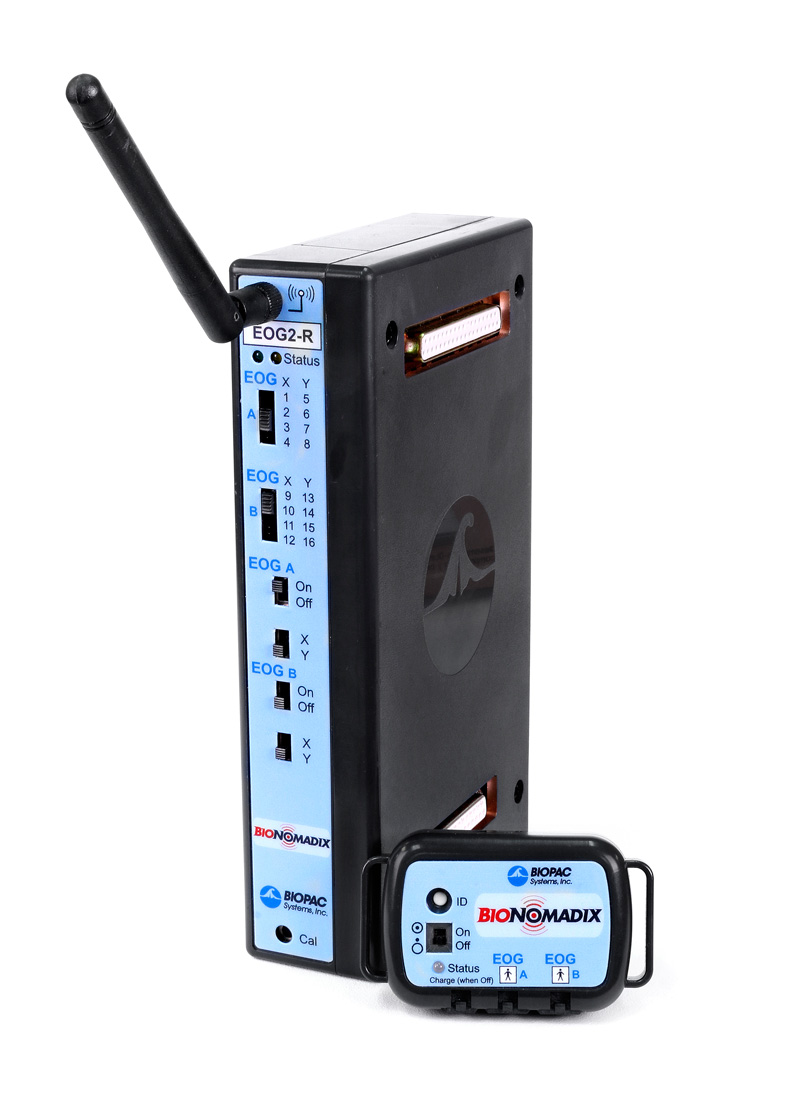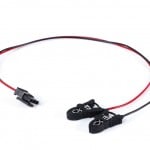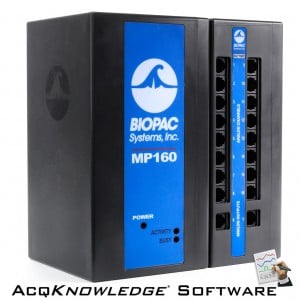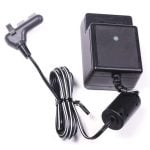Due to battery operation of the wireless transmitter and close proximity to the subject’s body, common-mode rejection ratio is extremely high, considerably in excess of any typical wired EOG recording system. Accordingly, notch filters to remove mains interference (50 or 60 Hz) are typically not required.
EOG data can be recorded from two independent sites, typically above and below an eye and from temple to temple.
Use AcqKnowledge to evaluate nystagmus, saccadic eye movements and vestibular function. Using AcqKnowledge, wide bandwidth EOG data can be filtered to specific frequency ranges to accommodate high quality EOG signal identification even in the presence of extensive subject motion.
Biopotential amplifier/transmitter signal to noise ratio is very high (in excess of 70 dB), as the noise floor of the amplifier/transmission system is only 0.9 µV rms (bandwidth of .005 Hz to 100 Hz).
The module set has a fixed gain of 2,000. The largest EOG signal which can be measured is 10 mV pk-pk. The smallest signal which can be detected is less than 1.0 µV rms.
Interference with other recording modules or systems is greatly minimized because the transmitter is completely battery operated and operates totally independently of any other recording grounds or power sources. The recording transmitter is also extremely safe to use, because there is no physical connection to supply mains.
The transmitter attaches to the subject’s head via stretchy Velcro strap, a stretch-mesh BioNomadix Shirt (see accessories), or Coban™ self-adhesive wrap (WRAP1). The exterior transmitter body dimensions (W x H x D) are approximately 6 cm x 4 cm x 2 cm and it weighs approximately 54 grams.
The transmitter’s battery can provide power for up to 72 hours of continuous operation.
The new BioNomadix series of wireless, wearable physiology monitoring devices for life science research are available for a wide range of signals, including ECG, EEG, EOG, EMG, EGG, Respiration, Pulse, Temperature, Electrodermal Activity, Impedance Cardiography, Accelerometry, and Gyro. BioNomadix are typically dual-channel units, offering either two of the same signal or a combination of signals.
BioNomadix noninvasively record high-quality, full-bandwidth data while comfortably allowing subjects to move freely in natural indoor environments. Each BioNomadix device consists of two parts, a transmitter that is worn by the subject to amplify and send the physiological data, and a receiver module. BioNomadix transmitters use digital transmission and short leads or transducers placed close to the signal source to provide excellent signal quality. BioNomadix are configured for specific signal types, so you don’t have to adjust settings on the hardware or software for high quality data.
Multiple BioNomadix can be used to provide the optimum signal combination for a research study requiring biopotential or transducer signals.
When used with a BIOPAC MP System, up to 16 channels of BioNomadix data can be recorded for multi-subject or multi-parameter protocols. The system also works with multiple MP150 systems or third-party data acquisition hardware via an isolated power supply module (IPS100C). AcqKnowledge software adds the power of sophisticated automation and scoring routines for each signal type, plus customization options.
BioNomadix accessory items include transducers, electrode leads, and a custom, pocketed stretch-mesh shirt to comfortably hold multiple devices in place. The shirt has zippers placed for easy access to electrode sites and is available from extra small to extra large.
Developed and manufactured by BIOPAC Systems Inc., a leader in life science data acquisition and analysis, the new BioNomadix series delivers all the benefits of a wireless solution with the signal quality & integrity of a wired system. BioNomadix provides a cost-efficient option for uncompromised wireless physiological subject monitoring.
Product Options
MODULAR CONSTRUCTION
Amplifiers snap together for easy system configuration and re-configuration.
Intuitive, Elegant AcqKnowledge Software
Powerful automated analysis. Instantly & easily view, measure, analyze, transform, and report data.
Powerful MP160 Data Acquisition and Analysis System
Flexible, proven modular data acquisition and analysis system for life science research.









Stay Connected